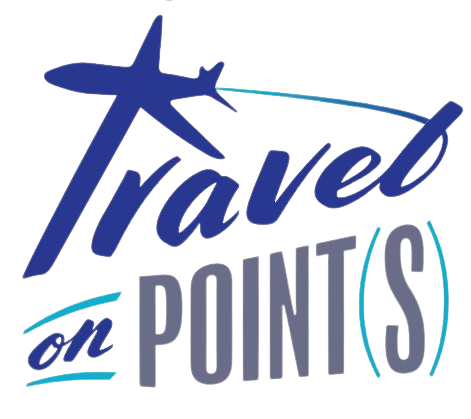This post is not regularly updated and offers may no longer be available. See this page for the latest offers.
Table of Contents
Toggle[Post updated 7/1/21 to reflect new offer terms]
In yesterday's post, I outlined why your first decision in your award travel journey is the choice between the Chase Sapphire Preferred (CSP) or the Chase Sapphire Reserve (CSR) over all other cards. To summarize, either of these cards are much more valuable than any other card in your wallet (especially for travelers)! Today, I help you decide between the two.
Chase Sapphire Preferred in a Nutshell
As you've already heard me say numerous times, the CSP currently offers a 100,000 point sign-up bonus for spending $4,000.00 in 3 months. Unlike its sibling card, the CSR, the CSP offers referral bonuses of 15,000 points per approved referral, up to 75,000 points per year. The CSP earns 2 points per dollar for all dining spend (all types of restaurants, including sit-down, fast food, coffee shops, bars, Grubhub, Eat24, UberEats, Seamless, etc.) and for all travel spend (hotels, airfare, Uber, taxis, parking, cruises, Airbnb, tolls, rental cars, tours, etc). It also comes with $60 towards Peloton memberships (all-access or digital) and you can earn 5x on Peloton Bike and Bike+ purchases. Lyft was recently increased to 5 points per dollar spend. All other spend earns 1 point per dollar. The annual fee is $95 [NOTE: a prior version of this post indicated that the annual fee is waived for the first year, this is no longer the case].
Chase Sapphire Reserve in a Nutshell
The CSR is much like the CSP, except it's not. The CSR currently offers a 60,000 point sign-up bonus for spending $4,000 in 3 months. It does not offer any referral bonuses. The CSR earns 3 points per dollar in all dining and travel items mentioned above, plus 10x on Lyft. All other spend earns 1 point per dollar. The annual fee is $550 and is not waived for the first year. You do, however, receive a $300 travel credit that is automatically credited to your account each time a “travel” charge (again, any of the items above) posts to your account. Following a change in 2017, this credit follows your card anniversary year and NOT the calendar year. You also receive a $60 DoorDash credit in 2020 and 2021, free DashPass delivery from qualifying restaurants, and a free 12 month subscription to Lyft Pink, which gives you 15% off all Lyft rides. Additionally, in 2021, the CSR offers up to $120 off on a Peloton membership (all-access or digital) and you can earn 10x on the purchase of a Bike or Bike+.
Comparison of CSP v. CSR Benefits
Who Should Choose the CSP?
The CSP is a wonderful travel rewards earning credit card for many people. If you have a lower income and/or a lower credit score, this might be the card for you. The credit requirements for a CSP are not as stringent as those required for a CSR and the minimum card limit is $5,000.00 (versus $10,000.00 for CSR).
Others that benefit from the CSP are the people terrified of a $550 annual fee. While CSR's generous $300 travel credit covers over half of this fee, the $550 upfront does seem daunting to many. If the CSR's annual fee scares you, and might even prevent you from entering the travel rewards journey, the CSP is the card for you! Try it risk free for 12 months. If you like it, you can keep it (or upgrade it to a CSR). If not, you've paid only $95 for the 100,000 sign-up bonus, the possibility of up to 75,000 points in referrals, and the ability to earn valuable URs at 1-2x on all charges.
Lastly, if you know you are in two-player mode, or you have lots of friends that you can refer and get their travel rewards journey started, the CSP is the card for you. In two-player mode, you earn 215,000 URs (100,000+100,000+15,000 referral), plus the points earned to hit the $8,000 spend for the two cards. Likewise, if you can maximize the 15,000 referral bonuses, with a yearly cap of 75,000 URs, the CSP is more attractive.
If any of these categories apply to you, give the CSP a 12 month test ride. By then, you'll know if you love it, need to upgrade to a CSR, or decide that free travel isn't for you.
Who Should Choose CSR?
So who should get a CSR? Basically everyone not specifically mentioned in the CSP discussion! There's a reason most people that initially choose a CSP eventually upgrade it to a CSR. For many years, the CSR was the top premium card on the market and caused Chase to lose 200 Million Dollars on the CSR program in the first year. While it is now debatable if the CSR remains the top premium card, with recent increased competition from Citi and American Express, the CSR is worth every single penny of the $250 AF (after the $300 travel credit).
For starters, if you are a frequent traveler, the CSR is the card for you. With a $100 Global Entry credit every four years, better insurance protection (see the comparison chart above), lounge access and restaurant credits via Priority Pass Select, and increased earnings (3x) on travel and dining charges, the CSR is the clear winner. The CSR's insurance coverage and lounge access is second-to-none in the premium card market!!!
Even if you are not a frequent traveler, so long as you spend $10,300+ per year in travel and dining costs, the CSR wins in value, as the difference between two annual fees is only $155. If you put any value in the $120 DoorDash credits you receive, the $120 Peloton credits, and/or the Lyft Pink 12 month membership, these benefits can make the CSR cheaper than the CSP.
As noted previously, the credit qualifications are somewhat more stringent than the CSP and the minimum credit card limit is $10,000. Having said that, college students, grad students, interns, etc. with limited income are approved for this card, provided their credit meets the qualifications.
Like the CSP, you can decide if you wish to keep it after the 12 month mark, downgrade it to a CSP or another UR card, or cancel it. Trust me though, the $250 AF (after the travel credit) is a small price to pay for all the benefits this premium card offers!
As always, please let us know your thoughts, comments or questions on here or in our Facebook group!








